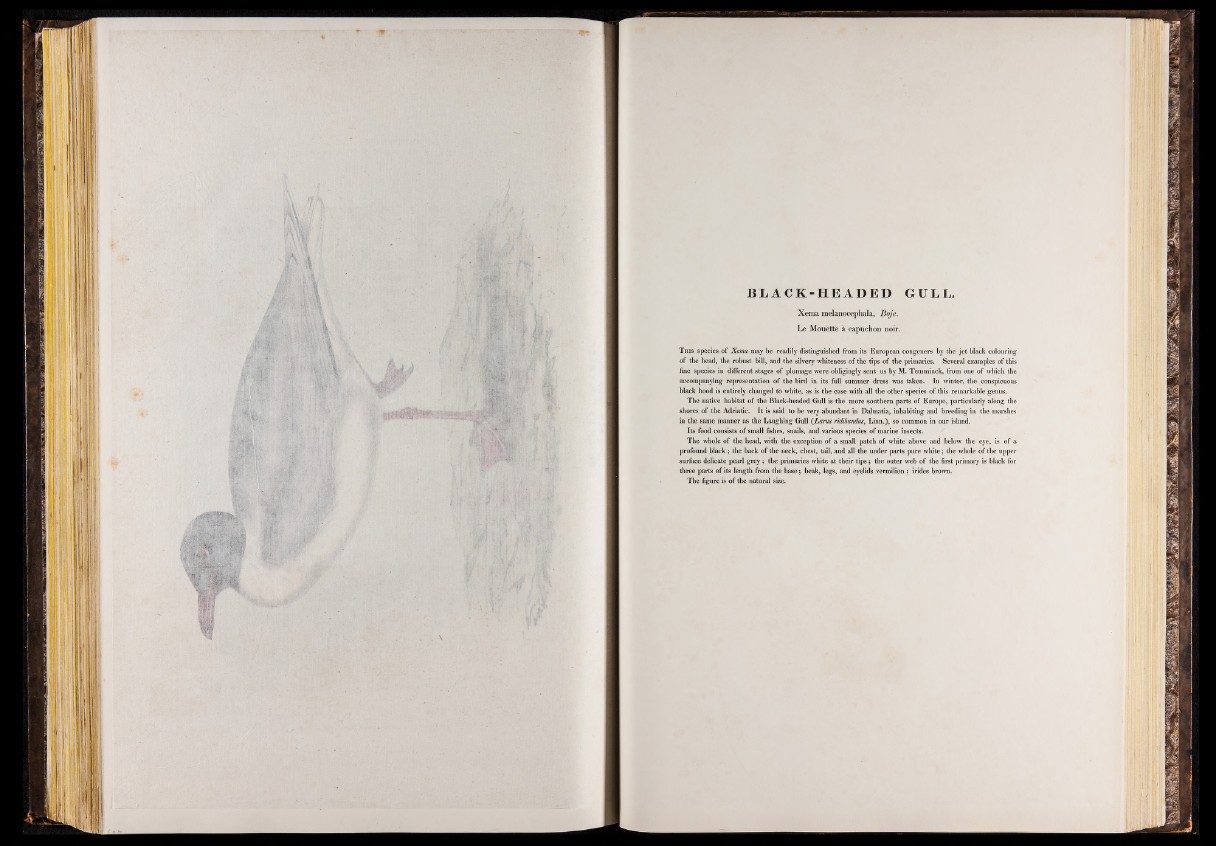
B L A C K -H E A D E D GULL.
X em a melanocephala, B oje.
L e Mo u e tte it capuchon noir.
This species of Xema may be readily distinguished from its European congeners by the jet black colouring
of the head, the robust bill, and the silvery whiteness of the tips of the primaries. Several examples of this
fine species in different stages of plumage were obligingly sent us by M. Temminck, from one of which the
accompanying representation of the bird in its full summer dress was taken. In winter, the conspicuous
black hood is entirely changed to white, as is the case with all the other species of this remarkable genus.
The native habitat of the Black-headed Gull is the more southern parts of Europe, particularly along the
shores of the Adriatic. It is said to be very abundant in Dalmatia, inhabiting and breeding in the marshes
in the same manner as the Laughing Gull (Lams ridibundus, Linn.), so common in our island.
Its food consists of small fishes, snails, and various species of marine insects.
The whole of the head, with the exception of a small patch of white above and below the eye, is of a
profound black ; the back of the neck, chest, tail, and all the under parts pure white; the whole of the upper
surface delicate pearl grey; the primaries white at their tips; the outer web of the first primary is black for
three parts of its length from the base; beak, legs, and eyelids vermilion ; irides brown.
The figure is of the natural size.